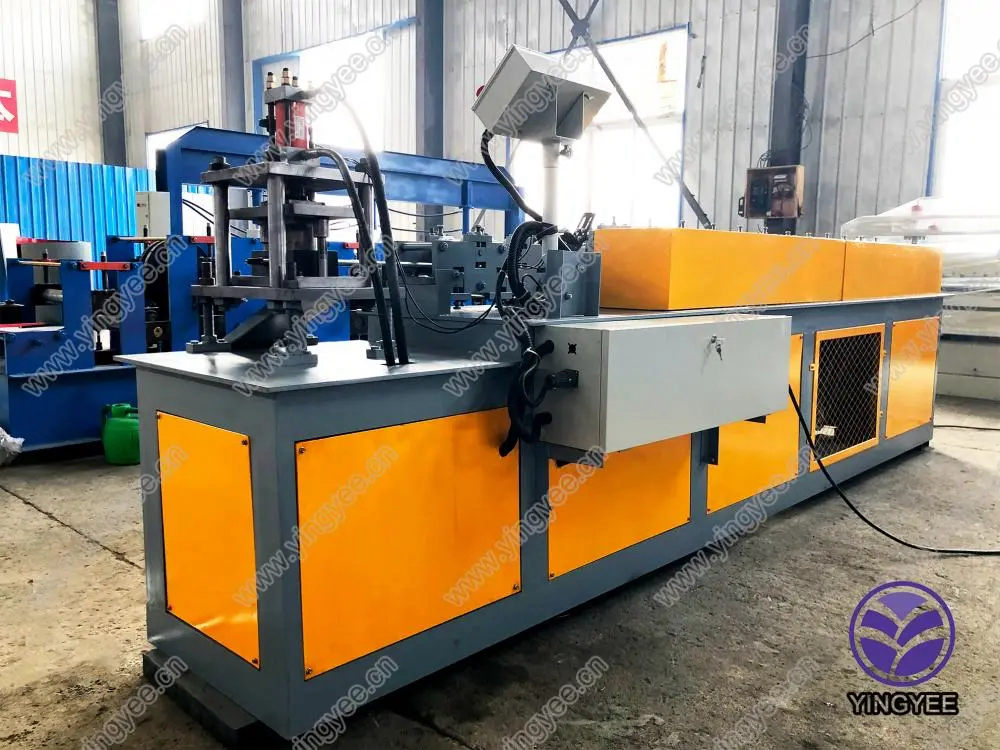
Roof Wall Panel Roll Forming Machine Revolutionizing Construction
In recent years, the construction industry has witnessed a significant transformation, driven largely by advancements in technology and manufacturing processes. Among these innovations is the roof wall panel roll forming machine, a vital piece of equipment that enhances efficiency, quality, and flexibility in the production of building materials. This machine plays a crucial role in the prefabrication of roof and wall panels, which are essential components in modern construction projects.
The roof wall panel roll forming machine operates by taking flat metal sheets and transforming them into shaped panels through a continuous process. The raw material, typically made from steel, aluminum, or zinc-coated steel, is fed into the machine, where it is progressively shaped and cut to the desired dimensions. The result is a series of uniform panels that can be used for both roofing and wall applications. This continuous process not only speeds up production but also reduces material waste, making it a more sustainable option for manufacturers.
One of the key advantages of using a roll forming machine is the customization it offers. Manufacturers can design panels in various profiles, thicknesses, and lengths to meet the specific needs of different projects. This flexibility allows for tailored solutions that cater to architectural designs, climate considerations, and structural requirements. Additionally, the machine can produce insulated panels, which provide superior thermal performance, further enhancing energy efficiency in buildings.
The durability of the panels produced by a roll forming machine cannot be overstated. Roll-formed panels are known for their strength and resilience, making them ideal for a wide range of applications—from commercial buildings to residential homes, and industrial facilities. The cohesive structure of the panels offers excellent resistance to harsh weather conditions, including extreme temperatures, high winds, and heavy rainfall. As a result, these panels contribute to the longevity and safety of the structures in which they are used.

Another significant benefit of roof wall panel roll forming machines is their ability to streamline the construction process. By utilizing these machines, contractors can minimize on-site labor and time, as panels are prefabricated in controlled environments before being transported to the construction site. This not only accelerates project timelines but also reduces labor costs and improves overall project efficiency. Furthermore, standardized panels can enhance the accuracy of installation, reducing the likelihood of errors or material misalignment.
The integration of automation and advanced technology in modern roll forming machines has further amplified their effectiveness. Many machines are now equipped with computer numerical control (CNC) systems, enabling precise control over the shaping and cutting processes. This automation not only enhances precision but also allows for real-time adjustments based on project requirements, resulting in better quality control.
Moreover, the shift toward eco-friendly construction practices has made roof wall panel roll forming machines increasingly popular. By using recyclable materials and minimizing waste, manufacturers can contribute to sustainable building practices. The lightweight nature of roll-formed panels also supports the reduction of the overall carbon footprint of transportation and construction activities.
In conclusion, the roof wall panel roll forming machine is at the forefront of innovation in the construction industry. Its ability to produce high-quality, customizable panels efficiently and sustainably makes it an indispensable tool for modern builders. As the demand for faster and more economical construction methods continues to grow, these machines will undoubtedly play a pivotal role in shaping the future of building materials and construction practices. With their numerous advantages, roll forming machines are setting new standards for quality and efficiency, driving the industry toward a more sustainable and effective future.